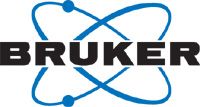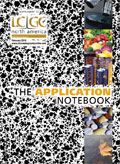High Resolution, Accurate Identification of Small Molecule Unknowns with UPLC and the maXis
Modern analytical applications often demand definitive tandem MS results on ever more complex samples utilizing fast separation techniques.
Modern analytical applications often demand definitive tandem MS results on ever more complex samples utilizing fast separation techniques. maXis™ is the only mass spectrometer able to deliver the maximum MS performance specification at the very highest speeds delivered by modern Ultra Performance Liquid Chromatography (UPLC) and Capillary Electrophoresis (CE). The maXis is specially designed to deliver excellent results in many applications including:
- Small Molecule Identification
- Impurity and Degradent Identification
- In vitro and in vivo Drug Metabolite Identification
- Intact Protein Analysis
- Quantitative Proteomics and Protein Identification
Redefining High Performance Mass Spectrometry
With resolution in excess of 40,000 and MS and MS-MS mass accuracy typically between 600–800 ppb at speeds of up to 20 full spectra per s simultaneously. No other mass spectrometer is better equipped to deliver definitive data on complex samples in proteomics, metabolomics, and small molecule identification challenges.

Figure 1: Extracted ion chromatograms of ±1mDa at acquisition speed of 10 spectra per s analyzed under 85 s.
Typical results from the maXis:
- 20 Hz speed of acquisition at high resolution for high-speed chromatography
- 40 k+ resolution in both MS and MS-MS mode
- Wide dynamic range of 5 orders of magnitude for trace detection in complex mixtures
- Sub-ppm mass accuracy in both MS and MS-MS mode for high confidence IDs
Experimental
Sample: Club Drug Mix of 10 Small Molecule Drugs

Figure 2: maXis⢠and SmartFormula⢠routinely deliver confidence in molecular identification with unsurpassed sub-ppm accuracy.
UPLC System
Waters Acquity UPLC with DAD detector (210–400 nm)
Column: Acquity BEH C18 1.7 μm 2.1 × 50 mm
Column Temperature: 40 °C
Mobile Phase
A) 0.1% Formic Acid in Water
B) 0.1% Formic Acid in ACN
Gradient
20%–40% B in 60 s
40%–100% B in 5 s
100% B for 172 s *followed by column equilibration
Flow Rate: 0.6 mL/min
Injection volume: 2 μL
MS System
Bruker Daltonics maXis
Spectral Acquisition 10 full spectra per s
Dry Heater 180 °C
Nebulizer 2 Bar
Capillary 4500 V
Dry Gas 6 L/min
ESI positive polarity
Range 100–800 m/z
Calibrant Lithium Formate (16mM)
LockMass Calibration Methylstearate
Results and Conclusion
In this study, the maXis was challenged to identify a series of unknown drug compounds that had been separated by UPLC. Using a typical reverse phase C18 gradient separation method, 7 of the 10 compounds were base line separated by the UPLC in 85 s at 10 Hz sampling rate. The maXis was able to discern the presence of 10 compounds in the sample, despite the lack of chromatographic separation of three of the compounds, even at levels as low as 10 pg on column. Furthermore, the excellent mass accuracy (<1 ppm) and resolution (Avg ~50 K) of the results generated by the maXis, when used in conjunction with the SmartFormula 3D software, were able to correctly identify all 10 compounds and unequivocally determine their molecular formula. This is exceptional performance from a qTOF, especially with a UPLC speed separation.

Bruker Daltonics Inc.
40 Manning Rd., Billerica, MA 01821
tel. (978)663-3660, fax (978)667-5993
Website: www.bdal.com

SEC-MALS of Antibody Therapeutics—A Robust Method for In-Depth Sample Characterization
June 1st 2022Monoclonal antibodies (mAbs) are effective therapeutics for cancers, auto-immune diseases, viral infections, and other diseases. Recent developments in antibody therapeutics aim to add more specific binding regions (bi- and multi-specificity) to increase their effectiveness and/or to downsize the molecule to the specific binding regions (for example, scFv or Fab fragment) to achieve better penetration of the tissue. As the molecule gets more complex, the possible high and low molecular weight (H/LMW) impurities become more complex, too. In order to accurately analyze the various species, more advanced detection than ultraviolet (UV) is required to characterize a mAb sample.















